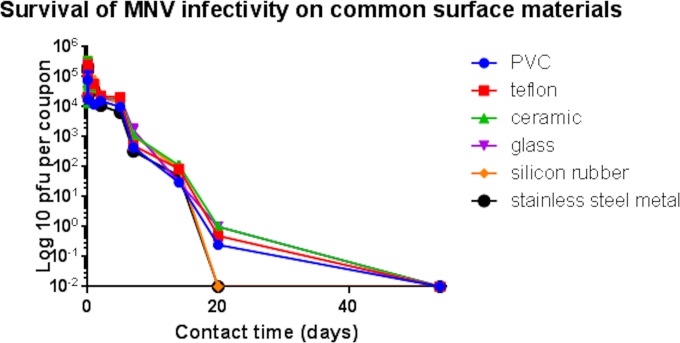FIG 1.
Persistence of infectious murine norovirus on common surface materials. Approximately 5 × 105 PFU of infectious virus was applied to 1-cm2 samples of test surfaces and incubated at room temperature. At various time points, virus was removed from the surfaces and assessed for infectious virus by plaque assay as described in the text. No significant reduction in infectivity of norovirus occurs on any surface over 2 h at room temperature. This was followed by a steady decline in the infectivity of norovirus. Infectious virus was present on all surfaces except stainless steel and silicon rubber at 20 days. However, because the infectious dose was very low (only 10 virus particles), this represents a considerable risk of infection spread. Slightly higher levels of infectious virus were recovered from ceramic surfaces commonly used in bathroom and kitchen tiles. Error bars represent ± standard deviations, and data are from multiple experiments.

